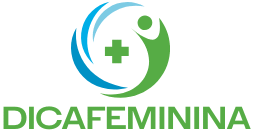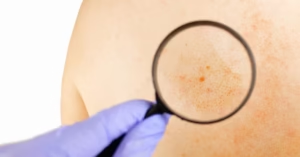Building an herbal first aid kit can be an empowering step toward taking charge of your health in a natural, sustainable manner while at the same time reducing harmful environmental emissions.
Create a tincture of yarrow, calendula and plantain with rubbing alcohol in a spray bottle labeled for external use only.
Herbs to Consider
An herbal first aid kit can provide an attractive alternative to store-bought ointments, plastic bandages, and pills; but selecting which herbs are right for your garden or medicine chest can be challenging.
As part of my efforts to make creating your first aid kit easier, I have curated some of my favorite medicinal herbs to add to your garden or store at home. These vulnerary and antiseptic remedies will assist the body’s natural healing processes by reducing inflammation, slowing or stopping bleeding and encouraging cell growth for tissue repair.
Vulnerary herbs can assist with wound closure by tightening and stitching together tissue proteins. They tend to have bitter flavors and often boast antiseptic properties which help fight infection.
Some vulnerary herbs to consider for use as vulnerary remedies include yarrow, plantain, chamomile and echinacea. Plantain’s anti-inflammatory and healing properties make it particularly helpful when used to heal minor cuts and scrapes; additionally it’s ideal for skin rashes caused by bug bites or poisonous plants.
Chamomile, on the other hand, is an excellent herb to keep handy for soothing burns and sunburns while simultaneously reducing swelling and soothing the skin. Furthermore, it can help treat fevers and headaches effectively as well. Chamomile may be taken in various forms – tea, fomentations (cloth soaked in herbal infusion and then applied directly), tincture or salve are all effective applications of Chamomile for these conditions.
Herbs to Keep on Hand
Antiseptic and painkilling remedies are key for many ailments; adding herbal treatments makes managing multiple conditions without adding chemicals to the body easier.
Aloe vera can soothe sunburn or kitchen scald pain, soothe abrasions and skin rashes, as well as be made into a gel for soothing wounds such as when treating insect bites. Arnica flowers can reduce swelling while increasing circulation – perfect for making gel for treating sprains, strains and bruises; while Chamomile has antispasmodic, anti-inflammatory, sedative properties to ease mild anxiety or promote sleep.
Home grown herbs provide you with instant access in case your child becomes sick or injured, or can be combined with other ingredients to create tinctures, teas and washes that treat minor issues.
If you are new to herbal medicine, start small. Build upon what knowledge you already possess by gradually expanding your collection as your understanding increases. Also beneficial is taking an herbal first aid class led by knowledgeable teachers and herbalists or consulting with physicians on dosage recommendations for medications and remedies made of plants – using natural solutions is a rewarding and powerful way to take care of yourself and your family!
Herbs to Add to a Garden
Assembling an herbal first aid kit is not just about self-reliance; it is an integral step toward natural living. By growing medicinal herbs for your own use instead of commercial products that often contain synthetic chemicals, artificial fragrances and preservatives that could irritate skin or have long-term adverse health impacts, this endeavor empowers natural living practices.
An herbal garden specifically tailored for first aid purposes can be an easy and accessible way to provide instant access to herbs that soothe bruises, heal burns, calm bites and treat other common afflictions. Discover which plants are the best to include in your medicinal garden, as well as how to prepare and use them when harvesting time comes around.
Being prepared with herbal first aid preparations can make the difference between minor scrapes and life-threatening wounds. This course will walk you through an easy process for creating your own herbal first aid spray and an ointment suitable for soothing cuts and scrapes. Your will also learn how to create a poultice, an effective remedy for burns and stings. We’ll show you how infusing herbs like thyme and eucalyptus with rubbing alcohol provides effective topical first aid, and mixing herbal sprays and ointments into multipurpose medicinal sprays and ointments for everyday use. When complete, this course will equip you with all of the skills and confidence you need to treat minor injuries, ailments and conditions within your family in more natural, healthy, self-reliant ways!
Herbs to Add to a Travel Kit
As we go about our daily lives, it can be easy to forget that the same plants we grow and use in cooking may also provide powerful remedies for ailments and injuries. A herbal first aid kit can be an invaluable way of decreasing harmful materials entering our environment as well as our bodies – something every household should have at their disposal.
Herbal salves and topical herbal preparations are great to have on hand for unexpected situations, like hikes or camping trips, when need arises. With ingredients easily found around your home or locally harvested such as calendula, plantain, yarrow or stinging nettle being harvested nearby you can easily craft homemade remedies to treat yourself while out in nature. Tinctures should be stored in small spray bottles clearly marked “EXTERNAL USE ONLY”, to be applied topically on sunburns, bug bites or minor cuts as needed.
Make a poultice out of dried herbs or roots when needed to treat burns, bruises, itching or stomach issues with ease – simply combine your chosen herb with some water to make a thick paste that can be directly applied over any problem areas.




